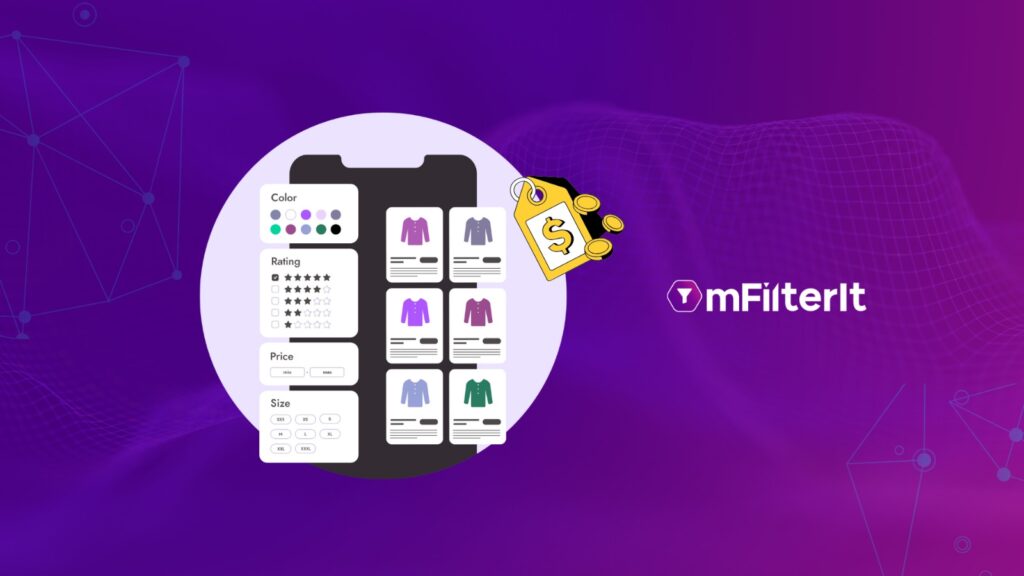Most brands are still pricing based on instinct, internal costs, or outdated competitor scans. And it’s costing them, sometimes without them knowing. A 5 percent gap in your average selling price compared to the market can quietly bleed revenue week after week. Miss a category-wide discounting trend by even a few days, and you’re left reacting while others are gaining share.
Winning on price today isn’t about dropping rates. It’s about knowing exactly where you stand—by SKU, by platform, by geography—and acting before competitors force your hand. Without that visibility, pricing becomes reactive, inconsistent, and risky.
This article breaks down what marketers miss without doing an in-depth pricing analysis and how to fix it with real-time data.
The Hidden Risks of Operating with Pricing Blind Spots
Here are the risks that arise when you don’t have full visibility into their pricing environment and competitors’ moves:
1. Limited Visibility into Average Selling Prices (ASPs)
Without tracking ASPs across marketplaces, brands risk flying blind. A price that seems competitive internally can be completely off when placed next to real-time market dynamics.
Take this example. Your brand launches a product at $50, feeling confident in its positioning. However, the ASP for similar products across key platforms has quietly dropped to $42. Without that visibility, your brand unknowingly overpriced itself, losing both traffic and conversions. Pricing too low can hurt just as much, eroding margins without gaining meaningful volume.
2. Discounting Trends That Quietly Erode Margins
Competitor discounts don’t always show up in obvious ways. Flash sales, time-limited offers, and bundle pricing often fly under the radar, but their impact adds up. If you’re only tracking list prices, you’re missing the real picture.
Say a competitor has been quietly running 10% discounts every weekend. On paper, their list price matches yours. But their actual selling price is lower, and you’re unknowingly losing share—or worse, matching that price later and cutting into your own margins just to keep up.
3. Missed Opportunities in Competitive Categories
High-growth categories move fast. If you’re not actively watching how competitors price within them, you risk losing share without even realizing it. Electronics, seasonal products, trending gadgets—these are the battlegrounds where pricing decisions directly shape who wins the sale.
Picture this. A competitor drops prices on wireless earbuds just as demand spikes. Their volume surges. Your product sits at the same price, losing visibility, conversions, and momentum. By the time you react, the wave has already passed.
4. Non-Compliance with MAP (Minimum Advertised Price) Guidelines
MAP violations usually don’t scream for attention. They slip in quietly. And if you’re not actively monitoring them, the damage creeps in just as quietly—until retail partners start picking up the phone.
Think about it. An unauthorized seller lists your product below MAP on Amazon. Most buyers won’t question it. They just assume that’s the new normal. Your retail partners? They see it too—and they’re not happy about being undercut while playing by the rules.
It’s not just a pricing issue, it’s a trust issue.
Building a Data-Driven Pricing Strategy
Here’s what a modern, proactive pricing strategy should include:
1. Benchmarking Using Real-Time ASP and Discount Data
Imagine this. Your flagship product sits at $120. Competitors? They are all clustering around $105. You notice it only after weeks of slower sales and rising cart abandonment rates.
At that point, it is not just about lowering prices. It is about regaining lost ground.
This is where real-time benchmarking changes the game. Tracking ASPs and discounting trends live—not after a quarter closes—helps brands stay responsive, not reactive. If you are serious about staying competitive, set up monthly reviews where your prices and discount patterns are directly compared against your top 5 category rivals. No guesswork, just clear gaps you can act on.
Without this discipline, even the best pricing strategies fall behind market movements that happen faster than internal processes can catch up.
2. Comparing Pricing Against Industry and Category Averages
You are confident in your pricing—until the numbers tell a different story.
In the fashion category, your dresses are priced 20% higher than the industry average, while your footwear is underpriced compared to competitors. Neither situation is ideal. One segment risks losing volume due to sticker shock, the other leaves margin on the table.
Category-level pricing analytics show patterns that product-level thinking often misses. They reveal whether your brand’s pricing feels premium, fair, or inconsistent to shoppers browsing multiple options at once.
Smart brands tackle this by setting up category-specific dashboards. These dashboards track where your pricing stands against both the industry and direct competitors, allowing you to course-correct without guessing. It is not about matching everyone else—it is about knowing when you should stand out and when you should realign.
Without this layer of visibility, your pricing strategy is flying blind at the category level
3. Monitoring MAP Compliance Using OEM Codes
You can’t fix what you don’t see—and MAP violations are a classic example.
Most brands only catch them when a retailer complains or when brand value takes a hit. By then, damage is already done. That’s why tracking MAP compliance with OEM codes or unique identifiers isn’t just useful, it’s non-negotiable.
Let’s say a SKU slips below MAP on a niche marketplace. With OEM-coded tracking, the violation is flagged immediately. No manual checks. No delays. You now have the leverage to take it down or reach out before your other retail partners even notice.
This level of automation only works when MAP monitoring is baked into your pricing system. Alerts should be real-time, platform-wide, and specific to each product variant. That’s how you stay ahead, not just informed.
4. Analyzing Pricing Across Geographies and Platforms
What works in Europe might fall flat in North America. And the same product can demand two very different prices depending on where—and how—it’s being sold.
In European marketplaces, brands often have higher prices. Less competition, stronger demand, and fewer discount-driven shoppers make that viable. In contrast, North America moves fast and fights hard on price. Aggressive offers are table stakes, not strategy.
If your pricing doesn’t reflect this, you’re either missing sales or leaving money behind. A one-size-fits-all model quietly creates inefficiencies across regions and platforms.
Set geo-based pricing rules that align with local market behavior. One price tag doesn’t belong everywhere.
5. Spotting Emerging Discounting Trends Early
Discounting trends don’t always announce themselves. They creep in. A few sellers test bundles during off-peak weeks. One or two start pushing quite markdowns mid-month. It doesn’t look like much—until everyone’s doing it and margins are gone.
The brands that catch these moves early? They’re not just watching prices. They’re watching timing, frequency, and format. Bundles showing up where they usually don’t? A spike in “limited-time” language during low season? That’s the signal.
You don’t need to monitor everything all the time. But you do need a rhythm.
- Set up quarterly reviews focused only on discount patterns
- Compare formats—not just percentages
- Watch how promotions shift outside typical cycles
Spot the trend early, and you get to decide how to play it, not chase it.
A Framework for Driving Pricing Agility
Here is how your brand can build internal processes and systems to react faster and smarter:
– Moving from Reactive to Proactive Pricing
Most pricing teams respond to change, they don’t anticipate it. That lag matters.
In September 2022, ahead of Amazon’s Prime Early Access Sale, several consumer electronics brands adjusted pricing 72 hours before the event went live, not after. According to CNBC, those early movers captured higher conversion rates in the two days leading into the sale, while others waited to react after losing traffic.
This kind of pricing foresight comes from treating pricing like forecasting. Teams that build internal triggers around market events—competitor campaigns, inventory shifts, category-level ASP drops—are able to move first. Not because they’re guessing, but because they’ve defined what signals justify a price change.
The model here is simple: use real-time inputs, apply structured logic, and respond based on thresholds. Whether it’s a 10 percent ASP drop in a core category or a competitor scheduling a flash sale, the decision to act should be automatic, not debated.
– Aligning E-commerce, Pricing, and Brand Teams Around Shared Data
When pricing decisions happen in isolation, missteps are inevitable. E-commerce teams prioritize performance, brand teams protect equity, and pricing managers aim to protect margins. Without a shared data layer, each one pulls in a different direction.
In 2021, Adidas restructured its internal ecommerce and brand pricing workflows after discovering that nearly 17 percent of its promotional pricing decisions were misaligned with regional brand guidelines. The company’s annual report confirmed this shift as part of its broader DTC acceleration strategy.
Cross-functional pricing governance isn’t about getting approval from everyone. It’s about giving all functions access to the same inputs—real-time pricing data, MAP status, competitor activity, and discount history—so they make decisions from the same baseline.
When a brand knows why the e-commerce adjusted price by 6 percent, and e-commerce understands the margin risk, pricing agility becomes coordinated, not chaotic.
– Where Pricing Intelligence Tools Fit
Data-backed pricing strategies only work when teams aren’t stuck collecting the data. The value isn’t in scraping prices—it’s in knowing what to do with those prices once you have them. That’s where tools like Ecommerce Intelligence Solution come in—not as dashboards to stare at, but as infrastructure that makes responsive pricing possible.
– Supporting Data Collection and Market Monitoring
Managing price and discount data manually across marketplaces isn’t just inefficient—it increases the risk of missing critical shifts. With platforms like mScanIt, data collection becomes automatic, so teams can shift focus from tracking prices to understanding them.
Take competitive benchmarking, for example. Instead of pulling pricing data manually for hundreds of SKUs, mScanIt delivers real-time dashboards that reflect pricing, discount levels, and SKU performance across platforms and regions. If your brand’s ASP rises above the category norm in a high-volume category, the system flags it immediately. You don’t wait for quarterly reports. You act now.
These aren’t generic reports. They’re targeted signals. Whether it’s a 10% discount trend in a fast-moving category or a sudden price shift on a top seller, you’re not playing catch-up—you’re already responding.
– Enabling MAP Compliance and Trend Detection
MAP violations rarely show up as obvious alerts. More often, they begin as small price drops on niche platforms. Without constant monitoring, they slip through unnoticed—until a retail partner raises a flag or consumers start questioning your price consistency.
mScanIt detects these shifts early. It connects pricing data directly to product SKUs and maps unauthorized sellers, so any deviation from MAP gets flagged in real time. This isn’t limited to major retailers. The platform tracks pricing activity across multiple levels, including lesser-known sellers who often trigger the first wave of price erosion.
Beyond compliance, it also surfaces patterns that matter. For instance, if multiple sellers in the beauty category begin bundling discounts around a specific subcategory, mScanIt highlights that as a growing trend. That gives brands the context they need to make proactive decisions—whether that’s matching offers, tightening policies, or updating category pricing.
Pricing intelligence doesn’t mean collecting more data. It means collecting the right data, at the right time, and doing something with it. That’s exactly where mScanIt fits in.
Turning Pricing into a Strategic Growth Lever
Pricing is not just about setting numbers. It defines how brands compete, protect margins, and capture market share. Without real-time visibility and structured agility, brands leave growth on the table.
Ask yourself:
- Do you know how your pricing compares across platforms right now?
- Are blind spots costing you revenue without you even realizing it?
- How much faster would you react with the right data in front of you?
Pricing should not react to the market. It should move ahead of it.
Contact us to see how mScanIt can help you turn pricing into a growth engine, not just a number on a tag.




